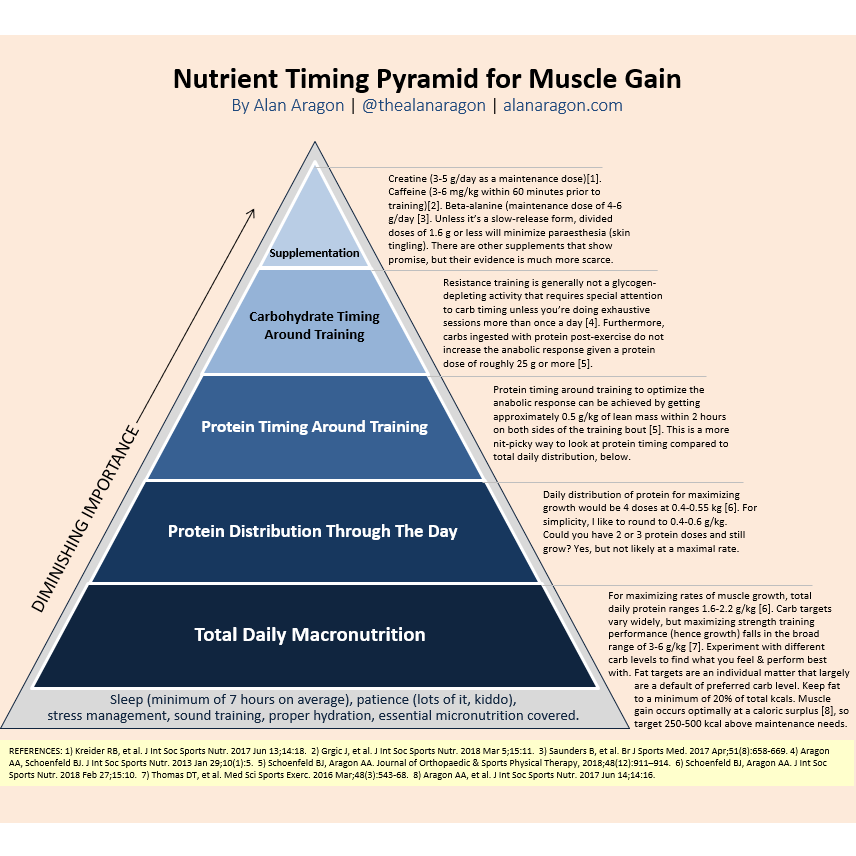Ok, I thought had to eat 20g protein every 3 hours due to muscles needing protein every 3 hours? I do keep a mental track of what I eat and I am cutting down, have lost 2 pounds since last week.
There’s two different things to talk about
1) It’s a bit more technical than this, but the basic mechanism is that when you ingest protein it starts off something called muscle protein synthesis (MPS), which is the whole growth/repair thing. In an ideal world, you want to maximise the amount of MPS per protein feeding, so you’ll get the biggest anabolic response; this is usually around 20-25g+ protein per meal/snack for most to hit that threshold, depending on how big you are. How much of a % of difference slightly more or less makes is up for debate, but it’s not hard to do this given 20g isn’t a huge amount (e.g. your typical shake is 20-25g, as is 100g of uncooked chicken).
If you have more, MPS isn’t elevated further because you’ve already maxed out the response. The extra protein isn’t wasted, because protein is used by the body for lots of things other than just muscle (especially during a diet), but it means less opportunity to trigger MPS later on. If you have less then it means you still trigger MPS but don’t maximise it. This elevation of MPS lasts for around 3-4 hours - the refractory period - which means any protein consumed before that won’t re-elevate MPS (again, not wasting the protein).
What this all translates to is a simple rule: divide your protein up into 4-6 feedings per day (preference/practicality/how many cals you have to play with), whether that’s as part of a meal or just a shake + snack. This is best practice for the purpose of muscle gain according to the body of evidence.
Now if you’re dieting, then outside of a couple of scenarios (new to lifting, coming back from a layoff, have a highish body fat) you won’t build much muscle due to the calorie deficit. Building muscle in an expensive process for the body, losing fat isn’t. For this reason, stimulating MPS as often as is possible becomes less as important because the overall environment isn’t as anabolic. The main thing is simply to eat enough protein to maintain positive nitrogen balance (a fancy way of saying you aren’t going catabolic) each day.
This leads to...
2) As far as avoiding muscle loss during a diet, over 24 hours your overall protein intake is by far the most important thing (as is training - as ‘use it or lose it’ becomes even more important). If calories are matched then it makes no meaningful difference if you’re having a few or lots of meals, because when you zoom out at the overall time spent in a fed/fasted state it’s the same. The only thing to really consider is protein around training, since training is inherently demanding of protein due to the breakdown of muscle tissue, which really just comes down to common sense and really applies whether you’re dieting, maintaining or gaining:
A) You want some protein in you 1-2 hours before training
B) You want some protein in you 1-2 hours after training




